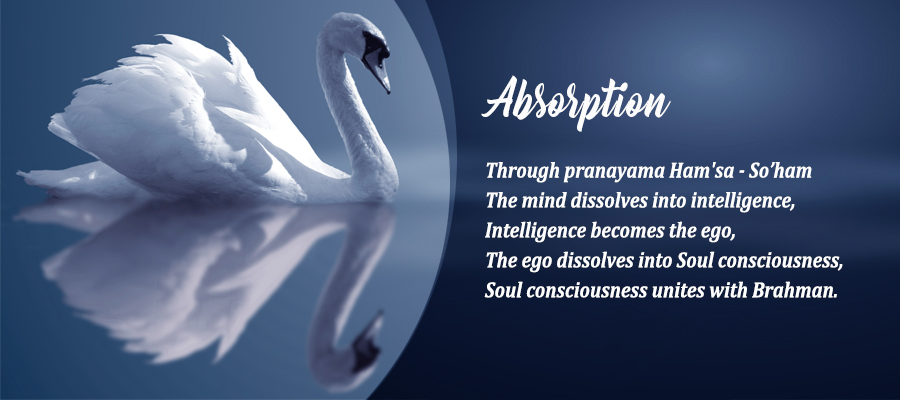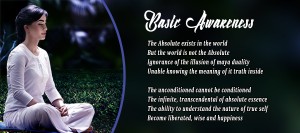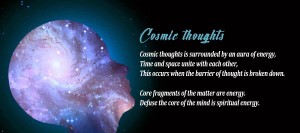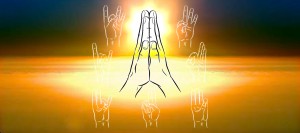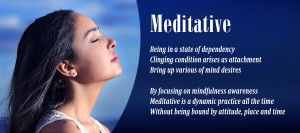The Hamsa is one of the key concepts in Vedic, Yogic and Tantric thought. Along with the Kundalini, it holds many secrets of deeper Yoga practices. Indeed without understanding the Hamsa, the Kundalini force cannot likely be properly developed or understood.
Haṁsa means swan. Hamsa is formed from two words haṁ and sa. This is also spoken as haṁsaḥ. In this case, the two words are haṁ and saḥ.
The Hamsa as a bird is portrayed in later Sanskrit literature as a swan, which is a symbol for Prana and the inner Self that is the highest Prana. The Hamsa in Puranic thought is the vehicle for Lord Brahma, the Creator, and his consort Sarasvati Devi as the bringers of knowledge. Yet Hamsa has other meanings and there are many forms of Hamsa back to the Rigveda where the Hamsa is primarily a solar symbol, the bird of light. Hamsa is also the shyena, the hawk or falcon that steals the Soma and takes it up from the Earth to enjoy it in the freedom of the highest Heaven.
The Hamsa in Tantric thought represents the individual soul or Jiva, whose life is governed by the breath, and all the dualities of body and mind that arise from it. This is because Ha and Sa are the natural sounds of the breath through inhalation and exhalation. Many forms of Pranayama follow these sounds accordingly.
Yet at a higher level beyond duality, Ha and Sa are the natural sounds of the Self, which is the inner breath of awareness, the unitary Prana that is Self-existent and immortal. Ha is the Self as I (aham) and Sa is the Self as that or the inner being. Hamsa also refers to the supreme or Paramahamsa, which is the liberated soul that dwells in the state of the Supreme Shiva. In this regard, Hamsa teachings are an integral part of Shiva Yoga and Shiva is also Hamsa. Hamsa as sound and prana vibration is also OM or Pranava, of which Lord Shiva is the indicator.
Hamsa represents the union of Shiva and Shakti, which are Ha and Sa, Sun and Moon, Prana and Apana, the incoming and outgoing vital energies. All dualities, starting with the breath, are a reflection of the greater two-in-one power of Shiva and Shakti, which gets divided into the lower worlds.
In terms of Tantric Yoga practices, the Hamsa represents the Shiva principle just as the Kundalini indicates the Shakti principle. Hamsa and Kundalini must unite and move together. It is the Kundalini that carries the Hamsa up the spine. At the same time, it is the Hamsa or soul energy that turns the Kundalini into a force of spiritual aspiration and ascent.
As Kundalini is the serpent power or Shakti of the soul, Hamsa is like the bird or Shiva/Purusha of the soul, whose two wings are prana and mind. Hamsa is the Jiva that seeks to fly upward to heaven, the thousand petal lotus of the head. Together Kundalini and Hamsa are the feathered serpents or the bird that flies upward holding the serpent. Yet Kundalini is not always a serpent, it is sometimes a bird, the Hamsa itself. Similarly, the Hamsa is not always a bird; sometimes it is also a serpent. Both serpent and bird indicate electrical and ascending energy. The Hamsa is an extension or expansion of the Bindu or the point-focus in its movement and expansion. Yet the Nada or vibratory principle forms its wings.
Without this soul-awakening or Hamsa Chaitanya, the “consciousness of the Hamsa,” one cannot work with Kundalini Shakti in a completely harmonious manner. If the Kundalini moves without the Hamsa, it is likely to disturb our physical and subtle bodies. It is Shakti without Shiva. First one must awaken the Hamsa in order to effectively awaken the Kundalini, though both tend to manifest together. This means to awaken as an individual soul in its perennial pursuit of the Godhead.
The Hamsa is the Jiva or individual soul that must take its journey back through the chakras guided by Shakti, to realize the supreme Shiva above in the thousand petal lotus of the head. The Hamsa is propelled in its ascending movement by Nada (vibration), Bindu (concentration) and Bija (mantras), and energies the Linga (powers of stillness) and Yoni (powers of receptivity) along the way. The Hamsa carries the Soma or nectar of delight (Amrita, Ananda) up from the lower chakras to the thousand petal lotus of the head, where it can release it in a thousand streams.

